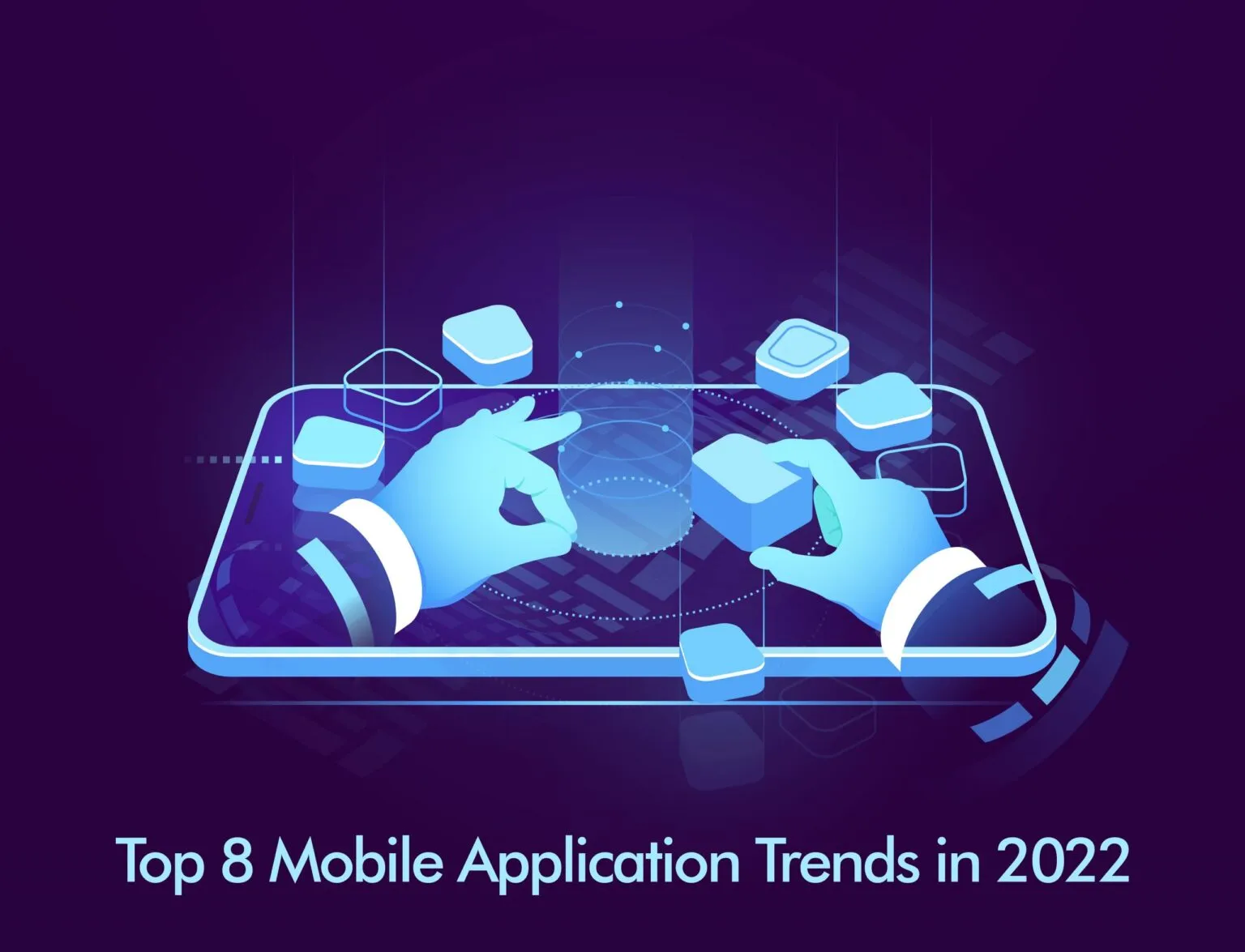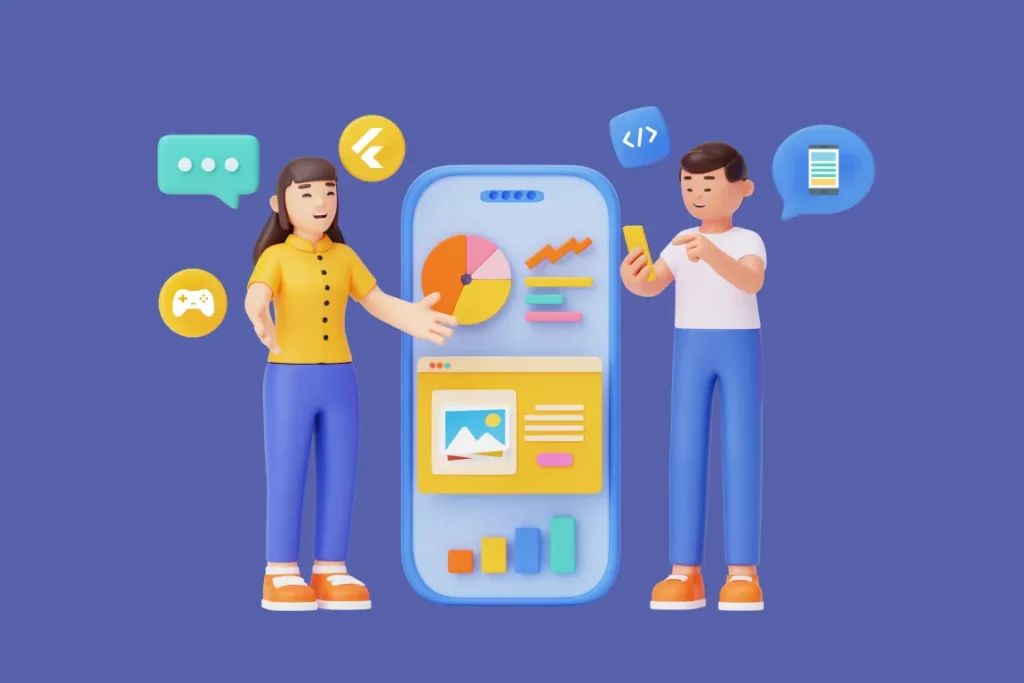With the rise of mobile devices, Mobile Apps must become a part of every company’s strategy. Organizations can improve their brand awareness and reputation by establishing a mobile app. People are increasingly inclined to mobiles because of the COVID-19 issue, and they spend more time on mobile applications. The mobile development industry is still booming, with revenue expected to reach $44.3 trillion by 2027, this is why we should be aware of mobile app development trends.
With the ever-changing competition, we should leave no marketing stone untouched. Why not use a mobile app to reach your customers? Smartphones are arguably the easiest niche to discover everyone in your target group, so why not utilize one?
Staying with the trends is indeed an imperative part of the modern era for having a successful place in the world. Mobile App developers must always keep an eye on the latest mobile app development trends to help.
Let’s discuss the Top 8 Mobile App Trend in 2022 that is going to dominate the Mobile Devices
Foldable Devices:
During the forecast period, the Foldable Smartphone Market is expected to grow at a CAGR (Compound Annual Growth Rate) of more than 21.3 percent (2021-2026). In 2019, approximately 3.2 million foldable phones were shipped, according to Statista. By 2022, this forecast is expected to reach 50 million units. This type of device can be customized to the user’s preferences. It can be expanded for a larger screen if users are watching movies or reading an article, and it can be folded to fit in a pocket or to call someone. This means that Apps should be these types of devices that are optimized for a better user experience and can function in both directions. The idea is that an app’s display should adjust seamlessly as the screen folds or unfolds.
Beacon Technology:
The beacon technology market is growing at a compound annual growth rate of 59.8 percent, according to Statista. By 2026, the market value is expected to reach $56.6 billion. Let’s take a look at beacon technology: Beacons are small Bluetooth-based technology that can transmit signals to nearby devices. This is one of the most recent technologies that aid in proximity marketing. It helps devices in their geo-based search and interaction. For example, if you own a shopping center and the app user is within range of it, you can use this technology to send messages to the user about the deals and discounts you are offering. It also helps marketers if they integrate it with Google Ads because they can see how many visitors they have through Google Ads.
On-demand apps:
On-demand apps, which grew in popularity during and after the pandemic, are one of the most popular application types. People were forced to stay at home, which provided an opportunity for businesses to reach out to potential customers via mobile applications. During this time, applications such as taxi booking, food delivery, online shopping, online studies, laundry services, parlor services, and OTT platforms have seen a surge in popularity. Even if we believe the pandemic is over, people have grown accustomed to having things delivered to their door in the comfort of their own homes.
Predictive Analytics:
Mobile applications can provide deep analytics and personalization features and services to users via machine learning and artificial intelligence. Apps, for example, can recommend similar products based on searched and purchased products, and OTT platforms can recommend movies or web series based on the user’s watch history. This improves the UX experience, which aids businesses in retaining users. Many businesses also use machine learning to improve the security of their customers’ sensitive information.
M-commerce:
M-commerce will be the one of the most asked mobile app development trends in 2022 as for many years, this trend has dominated the industry. With increased mobile app usage, the industry expects to generate more than $156 billion in consumer app spending by 2022. Mobile apps are being used by everyone, from small retailers to global brands. Furthermore, these apps save users time by eliminating the need to enter details such as shipping address, credit or debit card details each time they make a purchase, making the process more convenient.
App Clips & Instant Apps:
These Apps assist users in understanding the functionality and uses of apps without the need to download or install the app. Users are given a link through which they can access the app. Android Studio provides this feature to developers, allowing users to navigate the app by clicking the TRY NOW button. Though it has some size restrictions, these can be lifted soon.
Chatbots:
Chatbots are popular among businesses because they automate the entire buying and selling process and provide customer service, saving time and money for the company. Chatbots are growing more competent thanks to artificial intelligence, and they can now answer over 80% of questions posed by users. Despite the fact that the chatbot has been around for more than a decade, it is still a popular application due to technological advancements.
Conclusion
We’ve come a long way in terms of technological improvements. We can no longer picture our lives working regularly without the use of high-tech gadgets and materials. Mobile app development, without a doubt, brings something unique to the table. As a result, we can confidently assert that the future of mobile app development is highly exciting. Creating and developing apps will be easier than ever before because of the use of cutting-edge technology such as Hi-Tech app development trends and the fantastic connectivity of the 5G network. Furthermore, the performance will be greatly improved. We may anticipate a 100-fold improvement in the user interface. It is critical to be aware of the most recent changes in our surroundings in today’s tech-savvy society. This not only makes us more conscious, but it also greatly expands our knowledge.




